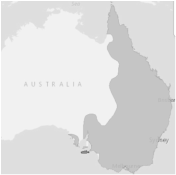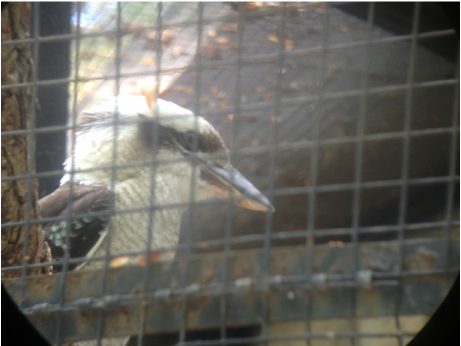Laughing Kookabura- Dacelo novarguineae
|
Range: Western Australia Size: ♂: 41-45cm (16-18 in) ♀: 241-45cm (16-18 in) Weight ♂:196-450 g (6.9-16 oz) ♀: 190-450g (6.9-16) Wing: N/A Habitat: coastal mangroves Incubation: 24-29 days Eggs: 2 Fledge: 33-39 days Sexual maturity:1 year Nest: tree cavity Social: solitary Breeding: cooperative breeder Movement : Sedentary Food: small mammals and reptiles IUCN: Least Concern Subspecies :2 Longevity: captive: 15 yrs Wild:15 years |
The Laughing Kookaburra gets its name from its unique vocalization. This native of Western Australia is quite common and is endemic to the continent. However it has been introduced to Tasmania and New Zealand.
Although member of the kingfisher family kookaburras do not feed on fish. They prefer rodents lizards and other small prey. Kookaburras feed much like other kingfishers, by silently waiting on a perch and swooping down on their prey. This species is listed as Least Concern by the IUCN. And although it is note listed on the CITES Appendices it is protected as a native species by the Australian government.
Your browser does not support viewing this document. Click here to download the document.
|


